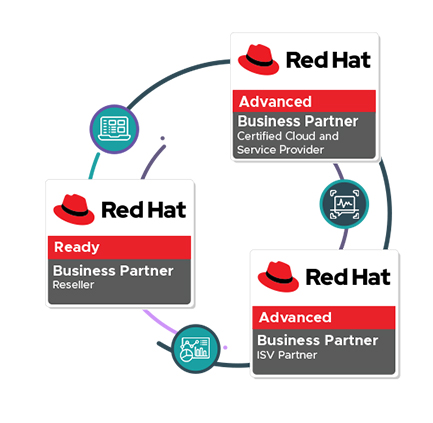In today’s complex, hybrid IT environments, knowing whether you’re using Ansible provisioning with Red Hat correctly can make or break your infrastructure strategy. Red Hat’s Ansible Automation Platform has become a cornerstone for enterprises automating provisioning, configuration, and deployment with consistency and control.
But even with such a powerful tool, it’s easy to misstep—whether by over-automating, failing to standardize, or overlooking security integration. So, how can you tell if you’re on the right track?
You Define Clear, Measurable Automation Goals
The first sign you’re getting Ansible provisioning right is clarity on your “why.” Successful automation isn’t just about saving time—it’s about achieving operational excellence. Ask yourself:
- Do you want to decrease provisioning time by 70%?
- Improve security patching consistency?
- Reduce unplanned downtime?
Organizations that succeed typically define specific, measurable objectives aligned with business outcomes. For example, Red Hat automation clients have seen a 667% ROI over five years and 61% fewer outages after adopting a structured automation framework.
You’re Leveraging the Right Tools and Playbooks
Choosing the right tools is critical. Are you using Red Hat Certified Content Collections? Are your playbooks built around standardized templates?
Red Hat’s Ansible Automation Platform offers curated, certified modules ensuring security and compliance from the start. Successful deployments often rely on:
- Modular, reusable playbooks
- Role-based access control (RBAC)
- Centralized inventory management
- Automated testing pipelines
hSenid Mobile emphasizes a modular playbook strategy supported by continuous optimization and integrated testing in controlled environments.
You Test, Monitor, and Iterate Relentlessly
Provisioning success is a continuous lifecycle. Effective organizations conduct dry runs in staging before production, using tools like Red Hat Insights and Ansible Automation Analytics to monitor, detect drift, and improve performance.
Checklist for Monitoring:
- Are your provisioning scripts version-controlled?
- Do you use analytics to evaluate playbook performance?
- Can you identify configuration drift and respond automatically?
Controlled deployment environments, as emphasized by hSenid Mobile, help simulate production behavior and fine-tune provisioning workflows.
Your Playbooks Are Secure by Design
Security shouldn’t be an afterthought. Successful teams integrate compliance remediation, vulnerability patching, and CIS benchmarks directly into their playbooks.
hSenid Mobile automates vulnerability fixes and applies CIS controls using Ansible for RHEL and AlmaLinux, ensuring system-wide integrity.
Red Hat Ansible Platform supports event-driven automation, enabling systems to self-heal when anomalies are detected—separating reactive setups from resilient architectures.
Conclusion: Mastering Ansible provisioning isn’t about scripting everything—it’s about building a thoughtful, secure, and measurable automation strategy that scales with your business. If you’re following these signs and best practices, you’re well on your way to becoming an automation champion.
You’re Scaling Without Losing Control
Provisioning at scale is a hallmark of maturity. If your playbooks work across hybrid clouds, multiple vendors, and support rollback mechanisms, you’re likely on the right path.
Ansible provisioning should not only deploy infrastructure—it should enable it to evolve. hSenid Mobile emphasizes multi-vendor compatibility and scalability in their Ansible-based solutions, allowing enterprises to extend automation across complex ecosystems without starting from scratch.
A mature provisioning setup ensures:
- Cloud-agnostic automation (AWS, Azure, OpenStack)
- Service-based orchestration
- Post-provisioning tasks (e.g., patching, role assignment)
Your Team Is Trained and Empowered
An often-overlooked aspect of successful Ansible provisioning Red Hat is team enablement. Are your developers, sysadmins, and DevOps engineers fluent in YAML? Can they troubleshoot playbooks independently?
Red Hat and partners like hSenid Mobile offer customized Ansible training programs, ensuring your team isn’t just using automation, but mastering it. Empowered teams lead to faster deployment cycles, lower dependency on external support, and more innovation across the board.
Is It Working for You?
Here’s a quick recap to help you assess:
| Indicator | Are You On Track? |
|---|---|
| Playbooks are modular and reusable | ✅ |
| You have goals and KPIs tied to automation | ✅ |
| Testing and rollback are part of the pipeline | ✅ |
| You integrate security and compliance | ✅ |
| The team is trained and self-reliant | ✅ |
| You’re scaling across environments | ✅ |
If you checked off most of these, congratulations—you’re likely leveraging Ansible provisioning the right way. If not, now’s the perfect time to revisit your strategy.
Conclusion
Effective Ansible provisioning Red Hat is about more than automating tasks—it’s about building a reliable, secure, and scalable foundation for your infrastructure.
If you’ve defined clear goals, built modular playbooks, integrated testing and security, and empowered your team, you’re well on your way.
Provisioning isn’t a set-it-and-forget-it process. It demands continuous monitoring, iteration, and adaptation as your environment grows. When done right, it becomes a powerful enabler of agility, consistency, and long-term operational success. Keep evaluating, refining, and aligning with best practices, and your provisioning strategy will keep delivering value.
Ready to Optimize Your Ansible Journey?
At hSenid Mobile, we help businesses scale, secure, and simplify infrastructure with Ansible and Red Hat technologies. From automation blueprints to hands-on playbook development and training, our services are built to future-proof your provisioning strategy.
Explore our offerings at hSenid Red Hat Solutions. and take your infrastructure automation to the next level.








